The Causes And Effects Of Ocean Pollution
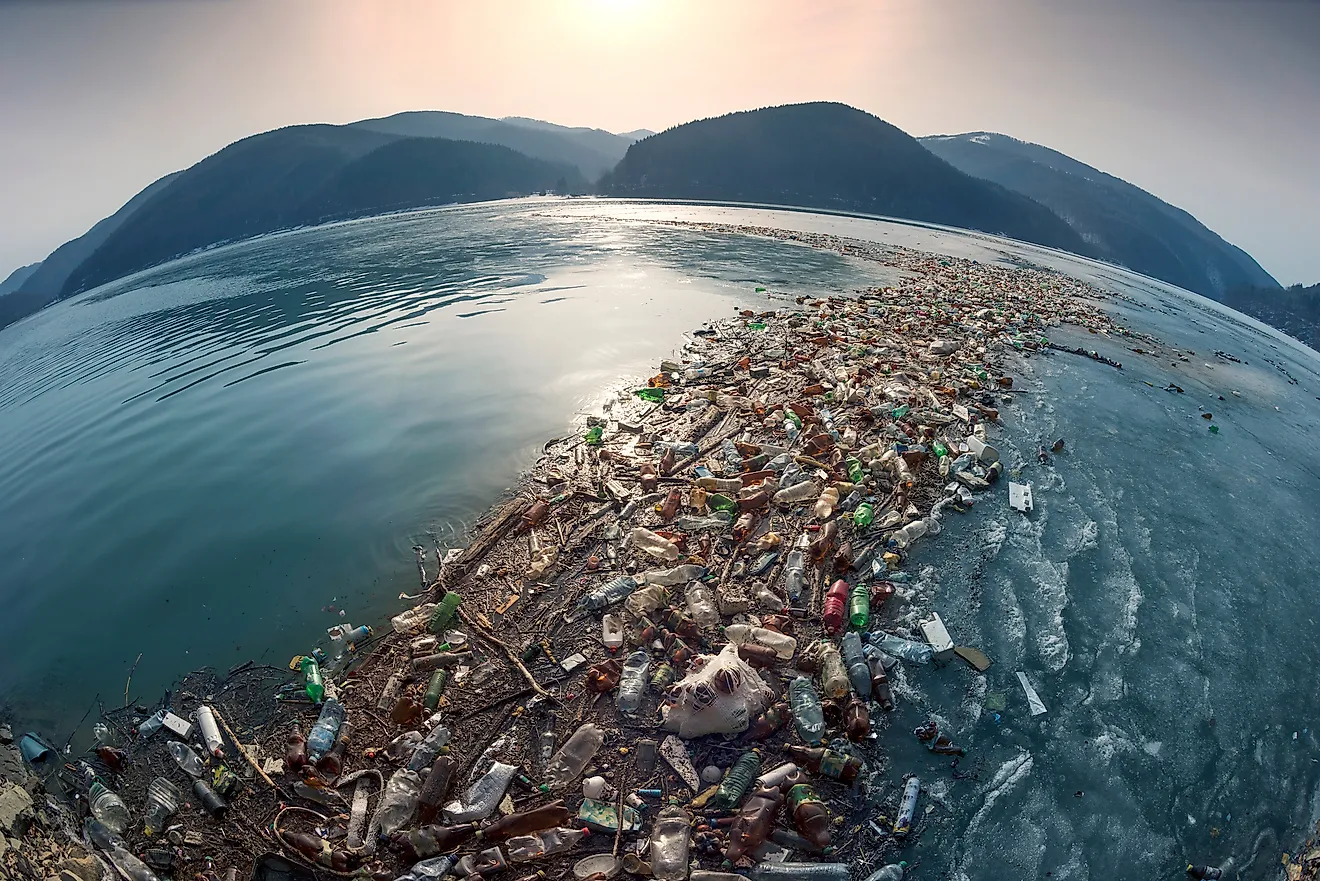
- More than 70% of the Earth is covered with water bodies that play an important role in our day-to-day life and form an indispensable part of our existence.
- Ocean pollution is caused by the introduction of toxic materials and harmful pollutants such as agricultural and industrial waste, chemicals, oil spills, and plastic litter into the ocean waters.
- Careless human activity has posed a serious threat to the ocean ecosystem, thereby affecting several species of marine flora and fauna as well as humans that are dependent on it.
More than 70% of the Earth is covered with bodies of water. Lakes, rivers, seas, and oceans play a vital role in our day-to-day life and form an indispensable part of our existence: food, transport, hydration, and temperature regulation are just some of the things they give us. So when these water sources are polluted, we humans feel the effects.
Ocean pollution refers to the introduction of toxic materials and other harmful pollutants such as agricultural and industrial waste, chemicals, oil spills, and plastic litter into the ocean's waters. The ocean provides humans with several resources and economic benefits, yet it is treated as a worldwide trash basin. This pollution of the world’s oceans is mainly caused by careless human activity that poses a serious threat to the oceanic ecosystem and in turn to several species of marine flora and fauna that are solely dependent on it.
Causes Of Ocean Pollution
There are several causes of ocean pollution. Some of the main causes are listed below. These are as follows:
Dumping Of Sewage
The dumping of sewage in the ocean is often regarded as the cheapest and easiest method of sewage disposal. Most of the untreated sewage containing lethal substances find their way into the ocean waters through the sewer systems and has detrimental effects on the health of marine flora and fauna.
Land Runoff
Referred to as non-point pollution, runoff is caused when the soil is infiltrated with water to its maximum extent and the excess water then flows from the land into the ocean via the drainage systems like rivers and streams. This runoff water carries with it the harmful toxins: the litter dumped in towns and cities, fertilizers, pesticides, and other soil contaminants. All these toxins are then dumped into the ocean along with the runoff.
Industrial Chemicals
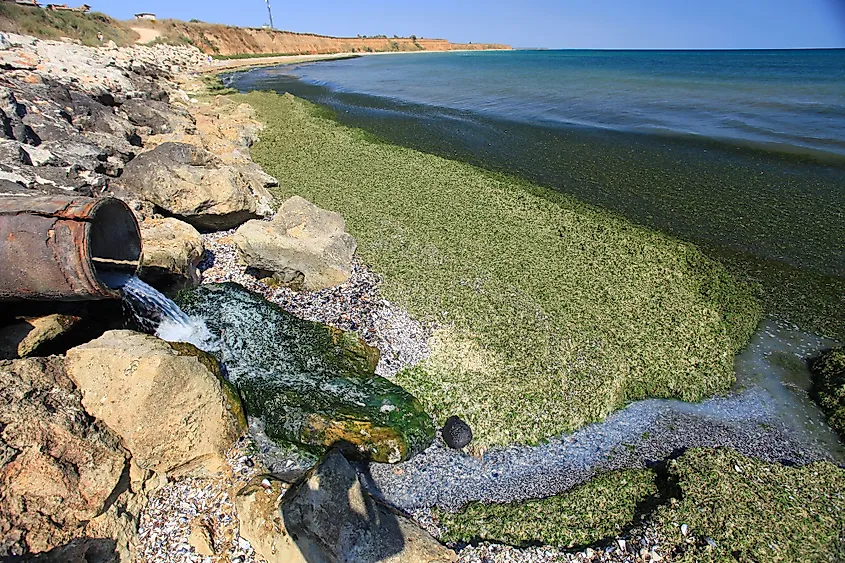
The untreated effluents and garbage along with harmful chemicals are also released into water bodies from several industries. The waste from industries like fossil fuel, plastic manufacturing, agrochemicals and pharmaceuticals contains harmful toxins like mercury, DDT, phthalates, Bisphenol-A, and other chemical substances. These pollute the oceans by altering the pH level of the water which contributes to the death of most aquatic flora and fauna. Such toxins also enter the bodies of marine animals and accumulate in their tissues. They are further transferred up the food chain from one level to another, resulting in biomagnification when the concentration of toxins increases as it ascends the food chain. Large quantities of such biomagnified toxins ultimately reach humans through the consumption of different kinds of seafood.
Eutrophication
Researchers have noted that the increased concentration of harmful chemicals in the ocean leads to eutrophication. The presence of nitrogen-rich fertilizers, animal wastes, and human sewage triggers the explosive growth of marine algae and other life-threatening microorganisms that subsequently disrupt the ocean ecosystem. The depletion of oxygen due to eutrophication will also cause the death of marine fauna, resulting in the formation of dead zones in the ocean waters.
Ocean Acidification And Thermal Pollution
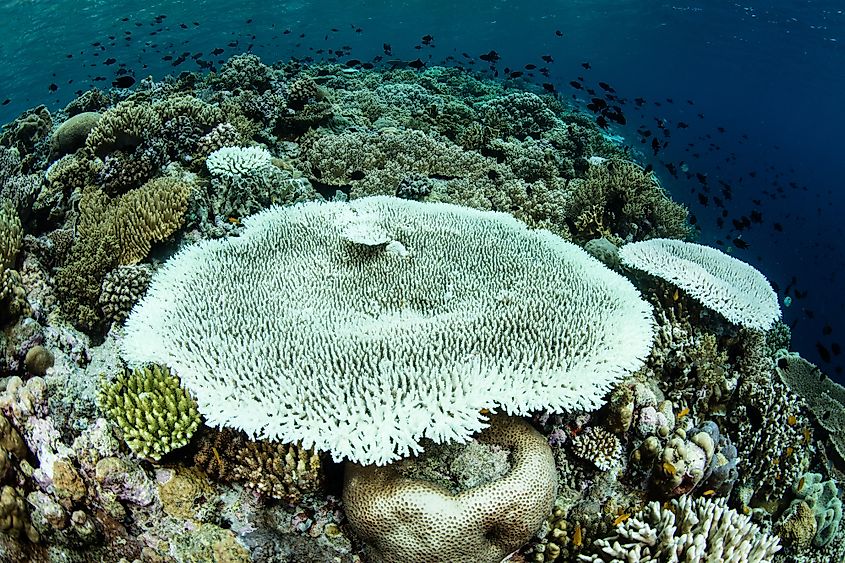
The ocean acts as a massive natural carbon sink by dissolving the atmospheric carbon-dioxide and excess heat in its waters. However, due to an increase in CO2 levels due to global warming, the waters of the ocean are becoming increasingly acidic—a process called ocean acidification. The change in pH is already affecting coral reefs around the world leading to coral bleaching which has detrimental effects on marine life dependant on these reefs for their life cycle.
Thermal pollution of the ocean waters is caused by the release of hot waters from power plants and processing companies into the ocean. It leads to a localized change in water temperature that, in turn, reduces the volume of oxygen dissolved in the water, killing marine life.
Oil Spills
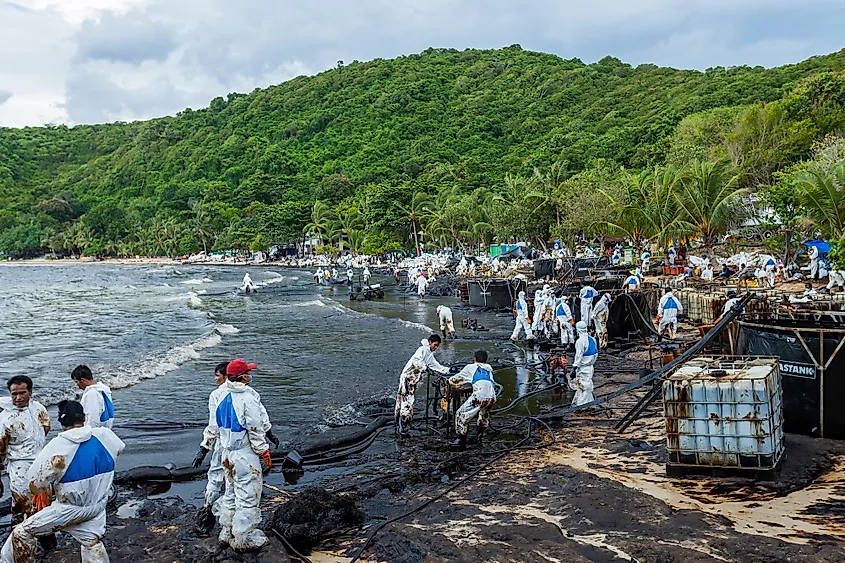
Oil spills result in the change of chemical composition of the marine ecosystems and also kill beneficial marine micro-organisms that generate oxygen. Such ecological imbalances lead to the smothering of the ocean’s biodiversity and result in reduced reproduction and migration, and the death of fish.
Noise Pollution
Unwarranted loud noise generated by passing ships for transportation and exploration activities is detrimental to marine life. Such unnecessary noise creates confusion in the marine environment by interfering with the acoustic information used by many aquatic species like whales and dolphins that rely on their sense of hearing for survival and other activities.
Plastics
A large quantity of single-use plastics have been mercilessly dumped as litter into the marine environment and have been found on beaches, in polar ice seas, and even on the shorelines of the world’s most remote uninhabited islands. Plastic debris has been transforming some marine areas into a plastic soup, leading to the choking of marine life and causing a potential large-scale impact on the marine environment.
Rain and winds carry macro plastics including plastic bags, bottles, and other wastes into storm drains and rivers which act as conveyor belts dumping about 1.15-2.75 million metric tons of waste into the oceans every year. The sunlight and the ocean waves help to breakdown the macro plastics into smaller pieces of microplastics, which have now become a ubiquitous component of the marine and freshwater ecosystems. These microplastics are spread throughout the water column and have even reached the Mariana Trench, thereby underscoring the breadth of marine pollution.
It has been estimated from several studies that about 8 million tons of carelessly managed plastic litter enters the oceans annually, and this would increase by about three times in the upcoming decade. A report by the United Nations has claimed that by 2025, the oceans will contain one ton of plastic for every three tons of fish, and by the year 2050, the plastic waste will outweigh the fishes present in all the oceans of the world.
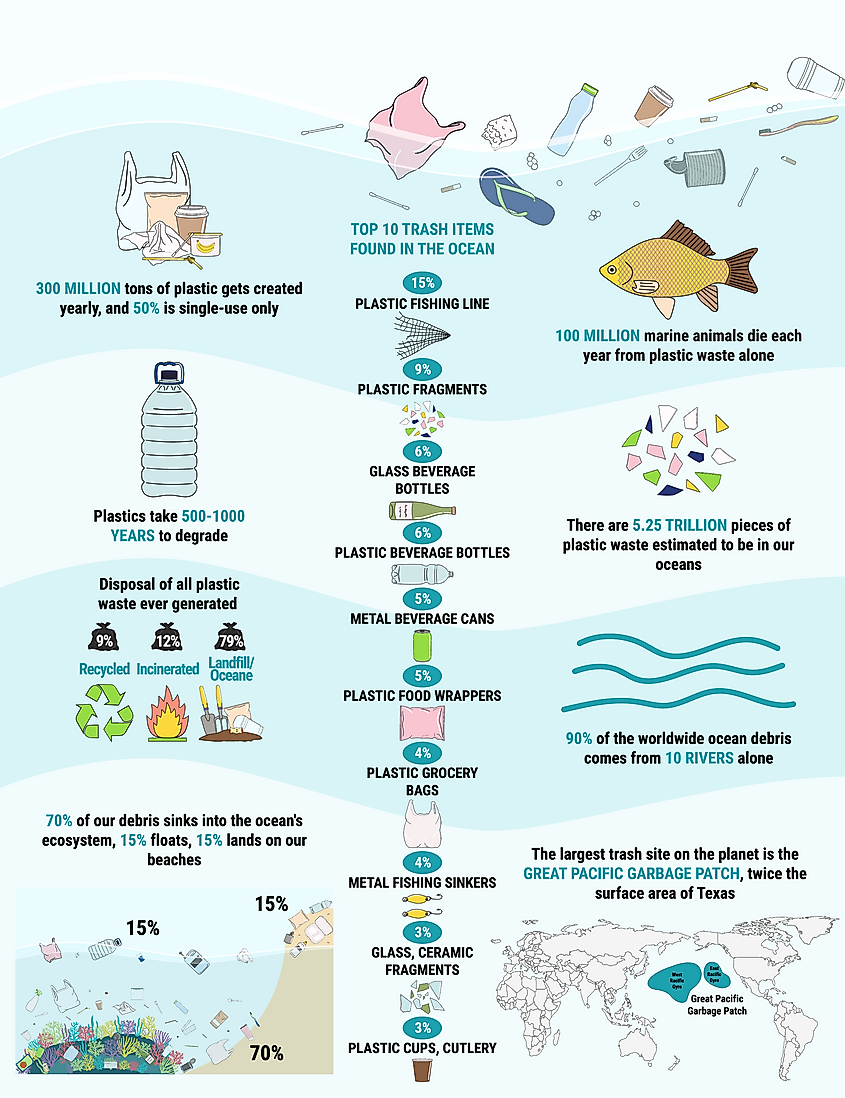
Effects Of Ocean Pollution
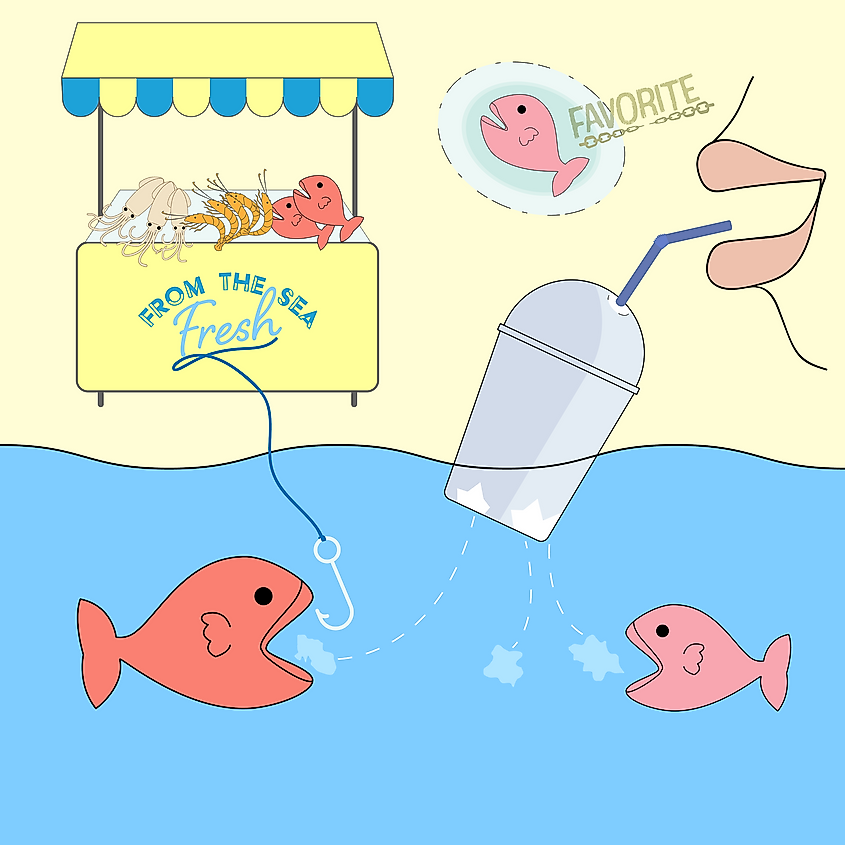
Ocean pollution has resulted in serious adverse effects on marine life as well as multiple negative impacts on the environment and human health. The harmful toxins and industrial chemicals that enter the oceans get accumulated in the fatty tissues of aquatic fauna and lead to severe damage to their reproductive systems. The sea birds that depend on the marine fishes for their food are also subsequently affected. When humans consume fish as seafood, they are also getting contaminated by these harmful chemicals. Oil spills prevent sunlight from reaching the aquatic flora and lead to a disruption of oxygen supply. Toxic chemicals and oil spills cause severe bleaching of coral reefs and results in the destruction of these fragile habitats and the life cycle of the coral animals. The fertilizers and pesticides that reach the oceans also contribute greatly to the global decline in fish populations as well as affecting the reproductive fertility of human beings that consume them.
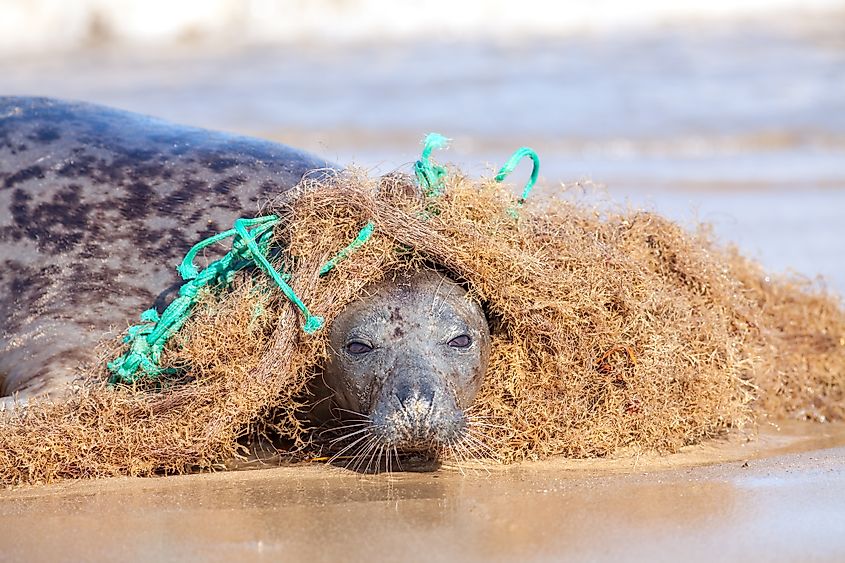
National Geographic studies have revealed that more than 700 species of marine organisms ranging from tiny corals to majestic whales are facing a serious threat from plastic pollution. Researchers have estimated that about 1 million aquatic birds and 100,000 marine fauna are killed every year due to the ingestion of plastic materials. It has also been observed that marine organisms across all trophic levels have microplastics in their bodies, and these ingested chemicals and plastic materials wreak havoc on the behavior, development, physiology, and reproduction in a range of marine species. Studies on oysters have revealed that their reproduction rates have been almost halved. Several marine organisms have also been found entangled in abandoned fishing gears, ropes, and fishing nets. Stranded ocean plastic litter creates visual pollution and causes major economic damages to tourism, fishing, and shipping activities, posing a challenge for the countries that rely on them. The Great Pacific Garbage Patch which spanning 617,000 square miles between California and Hawaii is estimated to contain about 1.8 trillion tons of plastic debris.











